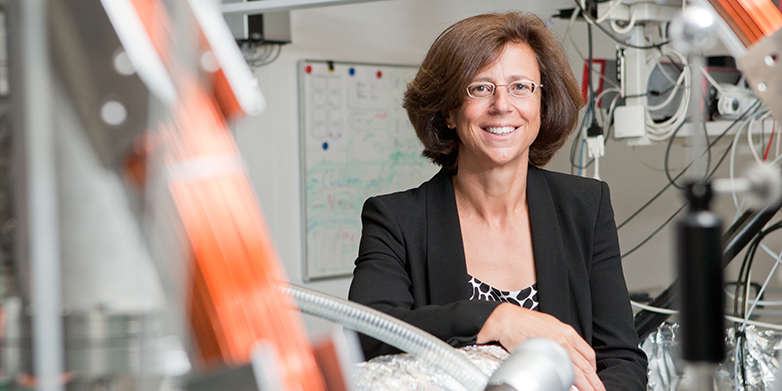2019 IEEE Edison Medal to Ursula Keller
The 2019 IEEE Edison Medal will be awarded to ETH physics professor Ursula Keller, head of the Ultrafast Laser Physics Group at the Institute for Quantum Electronics, for her career achievements.

The remarkable innovations of Ursula Keller have pushed the frontiers in ultrafast science and technology by providing solid-state and semiconductor lasers with ultrashort pulse generation that are revolutionizing photonics and tremendously impacting physics, biology, and telecommunications. Keller developed the semiconductor saturable absorber mirror (SESAM) for generating ultrashort pulses, which transformed femtosecond lasers from complex devices only used by specialists to reliable instruments suitable for use in any general-purpose scientific laboratory. She has since continued to define and push the technology with world-leading experimental results that have demonstrated orders of magnitude improvement in key features such as pulse duration, energy, and average power. Her SESAM technology overcame switching instabilities that had prevented modelocking of solid-state lasers for more than two decades and demonstrated how to generate picosecond and femtosecond pulses from diode-pumped laser technology lasers in a scalable, stable, and reliable manner.
Keller also pioneered vertical external cavity surface emitting lasers (VECSELs), which provide superior beam quality even at high powers compared to other semiconductor lasers and can operate both in the continuous wave and pulsed regimes. Combining the merits of SESAM and VECSELs, Keller proposed and demonstrated a new concept for the generation of ultrashort optical pulses from an all-semiconductor laser system. The modelocked integrated external-cavity surface emitting laser (MIXSEL) enables wafer-scale integration of gain and saturable absorption that allows simple and compact ultrafast lasers to be realized with the potential for high-volume manufacturing. She led her research group to overcome extreme technical challenges to achieve a 150-fold increase in the power emitted by MIXSELs. Keller’s development of carrier phase stabilization and frequency comb technology during the 1990s was integral to Hänsch and Hall’s development of laser-based spectroscopy that garnered them the 2005 Nobel Prize in Physics.
(Source: external page IEEE)
The IEEE Edison Medal
Twenty-five years after Thomas Alva Edison succeeded, in 1879, in producing the first practical incandescent electric light bulb, a group of Mr. Edison's friends and associates created in 1904 a medal in his name to commemorate the achievements of a quarter of a century in the art of electric lighting. In their words, "The Edison Medal should, during the centuries to come, serve as an honorable incentive to scientists, engineers, and artisans to maintain by their works the high standard of accomplishment set by the illustrious man whose name and feats shall live while human intelligence continues to inhabit the world."
Four years later, the American Institute of Electrical Engineers entered into an agreement with the founders to award the medal. The award now carries the designation of IEEE. The IEEE Edison Medal has been presented since 1909, to an individual for a career of meritorious achievement in electrical science, electrical engineering, or the electrical arts.